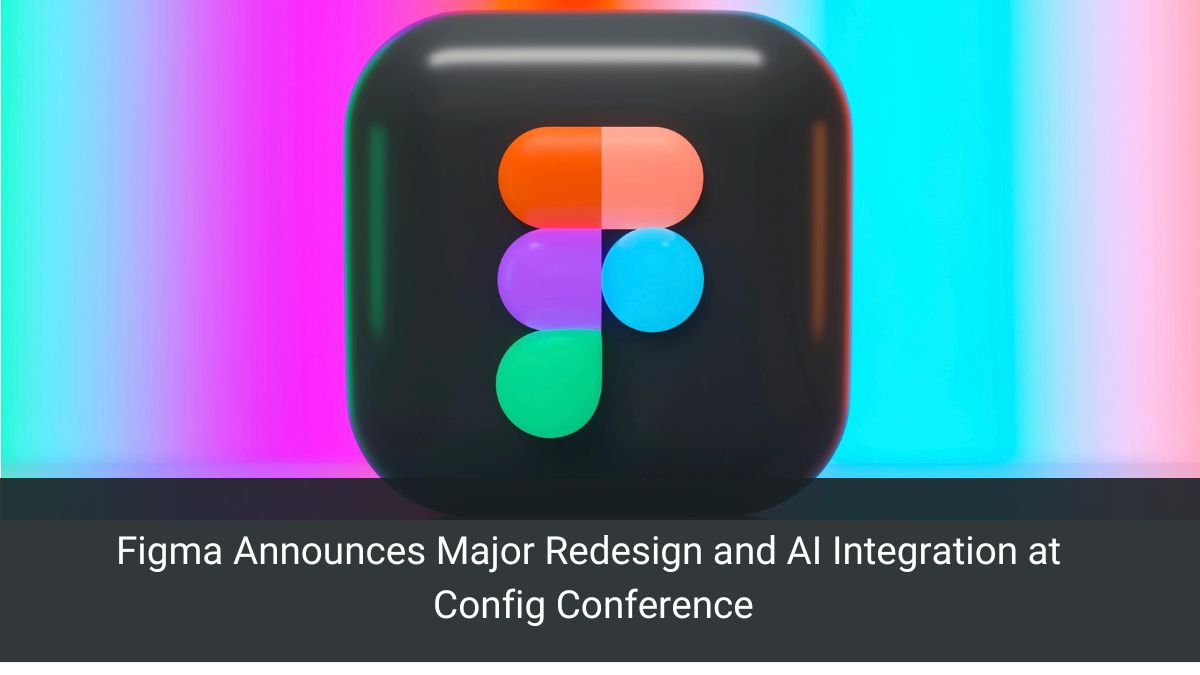AI
Figma Announces Major Redesign and AI Integration at Config Conference

Figma, the popular web-based design tool, has unveiled a series of significant updates at its Config conference. Among the highlights are a major user interface (UI) redesign, new generative AI tools, and the introduction of built-in slideshow functionality. These changes aim to enhance user experience and streamline the design process, catering to both new users and seasoned professionals.
A Decade-Defining Redesign
The Vision Behind the Redesign
Figma’s latest UI overhaul is intended to “lay the foundation for the next decade,” as detailed in a company blog post. The redesign introduces a refreshed toolbar, rounded corners, and 200 new icons. The goal is to make the interface more intuitive and less intrusive, allowing users to focus more on their creative work. This marks Figma’s third significant redesign since its closed beta launch.
New Look, Familiar Feel
The new UI, dubbed “UI3,” is rolling out in a limited beta. Users interested in experiencing the changes can join a waitlist to gain early access. Figma aims to balance approachability for new users with the robust functionality demanded by experienced designers. This redesign reflects a broader trend in software development: creating interfaces that are both aesthetically pleasing and highly functional.
Early Impressions
Initial reactions to the redesign have been positive, highlighting the improved usability and modern aesthetic. The changes are not merely cosmetic; they also aim to enhance the overall workflow, making it easier for designers to navigate the tool and execute their creative visions.
Generative AI Tools: A New Era of Design Assistance
Simplifying Design with AI
The headline feature of Figma’s update is the introduction of generative AI tools. These tools are designed to help users quickly get started with their projects. For instance, users can type a prompt into a textbox, and Figma will generate a basic design mock-up within seconds. This functionality mirrors the “draft an email” AI tools seen in other applications but tailored specifically for design.
Practical Applications
During a briefing, Figma’s Chief Product Officer Yuhki Yamashita demonstrated the AI’s capabilities. By typing a prompt for an app design for a new restaurant, the AI generated a mock-up complete with menu listings, a tab bar, and delivery partner buttons. Similarly, the AI created a design for a recipe page for chocolate chip cookies, including an AI-generated image of a cookie. These examples show how AI can expedite the initial stages of design, allowing users to focus on refining their projects.
Enhancing Efficiency
Figma’s AI tools are also designed to handle smaller tasks that can significantly speed up workflows. Features like AI-enhanced asset search and auto-generated text in designs (replacing generic Lorem ipsum placeholders) are aimed at improving efficiency. Yamashita explained that these tools are meant to “lower the floor and raise the ceiling,” making Figma more accessible to beginners while enabling experienced users to work faster and more effectively.
AI Implementation and User Privacy
Training AI Models
In a blog post, Figma’s CTO Kris Rasmussen detailed the company’s approach to training its AI models. The generative features introduced are powered by third-party, out-of-the-box AI models and were not trained on private Figma files or customer data. Instead, Figma fine-tuned its models using images of user interfaces from public, free community files.
User Control and Privacy
Figma is also providing administrators with the ability to control whether the platform can train on customer content. This includes content created in or uploaded to Figma by users, such as layer names, properties, text, images, comments, and annotations. This feature will not be enabled until August 15th, giving users time to understand and manage their privacy settings.
Introducing Figma Slides
Meeting User Needs
Another significant addition is Figma Slides, a built-in tool for creating presentations. Users have previously hacked Figma to make slides, but now there is an official method for building and sharing presentations directly within the app. This feature is available in open beta starting Wednesday and will be free during the beta period.
Unique Features
Figma Slides offers several unique features tailored to designers. Users can tweak designs included in their presentations in real-time, though these changes will only appear in the deck and not sync back to the original design files. Presenters can also demonstrate app prototypes directly from the deck, eliminating the need for screen recordings. Interactive features like polls and alignment scales can be added to engage audience members.
The Bigger Picture: Figma’s Strategic Moves
Developer Mode Enhancements
Figma is also enhancing its developer mode with a “ready for dev” task list, further streamlining the collaboration between designers and developers. These updates reflect Figma’s commitment to creating an integrated and user-friendly design ecosystem.
Post-Merger Landscape
This year’s Config conference is notable as the first since Adobe abandoned its planned $20 billion acquisition of Figma due to regulatory scrutiny. With the merger off the table, Adobe was required to pay Figma a $1 billion breakup fee. This development has allowed Figma to continue operating independently, focusing on innovation and user-driven improvements.
Figma’s latest updates, unveiled at the Config conference, represent a significant leap forward for the platform. The UI redesign, generative AI tools, and introduction of Figma Slides are poised to enhance the user experience and streamline the design process. As Figma continues to innovate, it remains committed to balancing accessibility for new users with advanced functionality for experienced designers.
These updates not only reflect the company’s forward-thinking approach but also its responsiveness to user needs and industry trends. By integrating AI and expanding its toolset, Figma is setting a new standard for design software, ensuring it remains a vital resource for the design community in the years to come.
